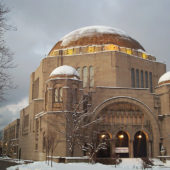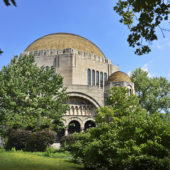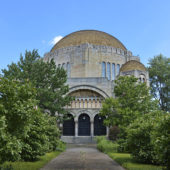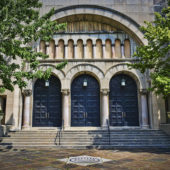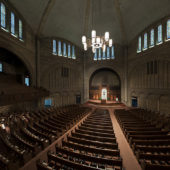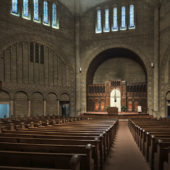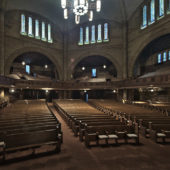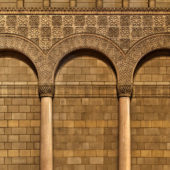This National Landmark was once one of the largest Reform Jewish congregations in the United States.
A small group founded Cleveland’s first synagogue in 1847. Only three years later a faction of this group broke away and formed Tifereth Israel in a new temple. The growing congregation moved into a bigger temple in 1894, and in 1924, it built the East 105th Street temple. This impressive Byzantine style structure, popularly known as the University Circle Temple, was constructed of limestone, bedecked with inlaid marble, colored tiles, stained glass and carved walnut furnishings. The building, a Cleveland treasure, is listed on the National Register of Historic Places.
By the late 1950s the membership stood at over 2,000 households. During the next decade, due to shifting demographics, many of the Temple’s congregants moved to the suburbs. In 1964, as many younger Jewish families moved further from the inner city, Tifereth Israel built a branch six miles away in Beachwood, Ohio. It was, in fact, the last of Cleveland’s large Jewish congregations to move to the suburbs. Nearly fifty years later, the branch had grown to the extent that nearly all congregational activities took place there rather than at the University Circle Temple.
In view of declining attendance at the University Circle Temple a unique collaboration was made in association with nearby Case Western Reserve University (CWRU). In March of 2010 it was announced that the Temple at University Circle would start a new dual life as the Milton and Tamar Maltz Performing Arts Center of CWRU. The Temple would continue to use its Silver Sanctuary for High Holy Day worship and life cycle events.

